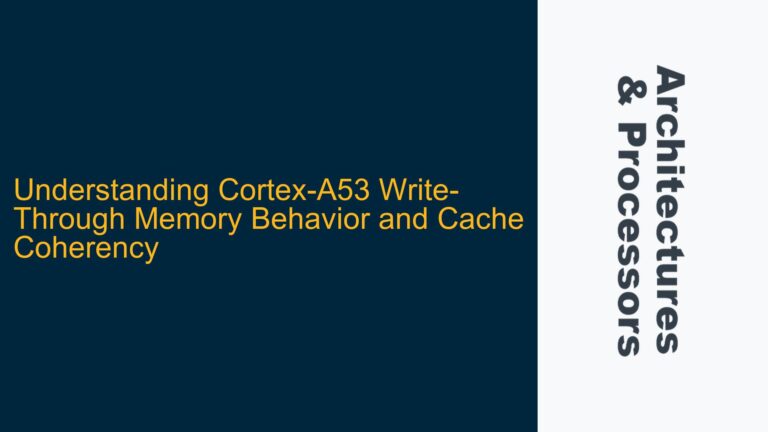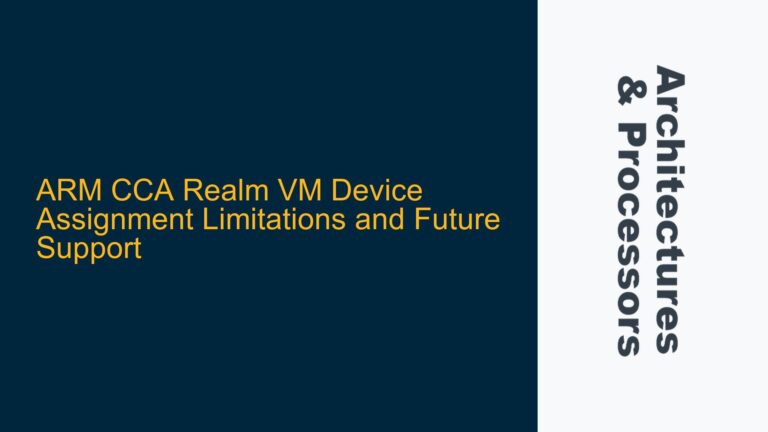Cortex-M0 Debugging Instability Due to XIP Flash Mapping at Address 0
The instability observed during debugging of the Cortex-M0 DesignStart FPGA implementation, particularly when using the Keil debugger with the Arty A7-35T board and DAPLink interface, is primarily caused by the mapping of XIP (Execute-In-Place) Flash at address 0. This configuration leads to slow execution speeds and improper debugging behavior, manifesting as timeouts, breakpoint failures, and memory access errors. The issue is exacerbated when multiple breakpoints are set, causing the Coresight unit to crash. The root cause lies in the interaction between the Cortex-M0’s memory architecture, the DAPLink board’s memory mapping, and the debugger’s ability to manage breakpoints and memory access efficiently.
The Cortex-M0’s memory map is designed to execute code directly from Flash memory, which is typically mapped at address 0. However, in this implementation, the XIP Flash is mapped at address 0, which introduces significant latency during code execution. This latency disrupts the debugger’s ability to synchronize with the core, leading to timeouts and unstable behavior. Additionally, the DAPLink board’s configuration does not account for the performance limitations of XIP Flash, further complicating the debugging process. The scatter file used to define the memory layout plays a critical role in this scenario, as it determines where code and data are placed in memory. The default scatter file maps the code section to address 0, which is suboptimal for debugging due to the inherent latency of XIP Flash.
XIP Flash Latency and DAPLink Configuration Mismatch
The primary cause of the debugging instability is the combination of XIP Flash latency and a mismatch in the DAPLink board’s configuration. XIP Flash, while useful for executing code directly from non-volatile memory, introduces significant access latency compared to SRAM. This latency is particularly problematic during debugging, where the debugger frequently accesses memory to set breakpoints, read registers, and manage execution flow. The Cortex-M0’s Coresight unit, which handles debugging functionality, is not optimized to handle the additional latency introduced by XIP Flash, leading to synchronization issues with the debugger.
The DAPLink board’s default configuration maps XIP Flash to address 0, which is the Cortex-M0’s default execution address. This mapping forces the core to execute code directly from Flash, resulting in slow performance and unstable debugging behavior. The debugger, expecting faster access times, times out when it cannot communicate with the core within the expected timeframe. Additionally, the Coresight unit’s ability to manage breakpoints is compromised when executing from high-latency memory, leading to crashes and memory access errors. The scatter file, which defines the memory layout, exacerbates the issue by not accounting for the performance limitations of XIP Flash.
Another contributing factor is the DAPLink board’s handling of JTAG communication. The JTAG interface, used for debugging, relies on precise timing and synchronization between the debugger and the target device. The latency introduced by XIP Flash disrupts this synchronization, causing intermittent communication issues. The debugger interprets these issues as timeouts or device lockups, further complicating the debugging process. The combination of XIP Flash latency, suboptimal memory mapping, and JTAG communication issues creates a perfect storm of debugging instability.
Relocating Code to SRAM and Optimizing Scatter File Configuration
The most effective solution to the debugging instability is to relocate the code from XIP Flash to SRAM, which offers significantly lower access latency and better performance for debugging. This can be achieved by modifying the scatter file to map the code section to an SRAM address, such as 0x10000000, instead of the default address 0. The scatter file defines the memory layout for the application, including the placement of code, data, and stack sections. By relocating the code section to SRAM, the Cortex-M0 can execute code at full speed, eliminating the latency issues caused by XIP Flash.
The modified scatter file should define two regions: one for the code section in SRAM and another for the data section in a separate SRAM block. The code section should be mapped to address 0x10000000, while the data section can remain at its default address of 0x20000000. This configuration ensures that the core executes code from low-latency SRAM, improving debugging performance and stability. The scatter file should also include the necessary startup and system files, ensuring that the application initializes correctly and executes from the new memory location.
In addition to modifying the scatter file, it is essential to verify the DAPLink board’s configuration and ensure that it supports the new memory layout. The DAPLink board should be configured to map the SRAM region correctly and provide the necessary support for JTAG communication. If the board’s firmware does not support the new memory layout, it may need to be updated or reconfigured. Additionally, the debugger settings in Keil should be adjusted to account for the new memory layout, ensuring that breakpoints and memory access are managed correctly.
The following table summarizes the key changes required to resolve the debugging instability:
| Component | Default Configuration | Optimized Configuration | Impact |
|---|---|---|---|
| Scatter File | Code section at address 0 (XIP Flash) | Code section at address 0x10000000 (SRAM) | Eliminates XIP Flash latency, improves debugging performance and stability. |
| DAPLink Board | Maps XIP Flash to address 0 | Maps SRAM to address 0x10000000 | Ensures correct memory mapping and JTAG communication. |
| Debugger Settings | Default memory layout | Adjusted for SRAM execution | Ensures breakpoints and memory access are managed correctly. |
By relocating the code section to SRAM and optimizing the scatter file configuration, the debugging instability can be resolved, enabling stable and efficient debugging of the Cortex-M0 DesignStart FPGA implementation. This solution addresses the root cause of the issue, providing a robust and reliable debugging environment for ARM-based SoC designs.






